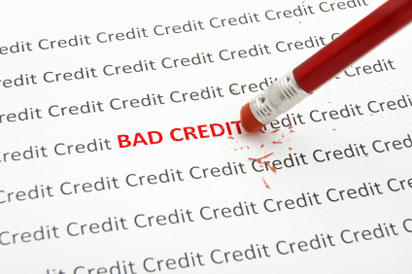If you’ve never been rejected for credit, count yourself fortunate. Somewhere between 25 to 35% of most credit card applications are typically approved, “depending upon the pricing value proposition and other factors,” according to Robert Hammer, president of R.K. Hammer and Associates, a consultant to the card industry.
That means one out of every three or four applicants may be getting a rejection letter. With some issuers, the approval rate may be a mere 10% or so.
If you’re not turned down for credit, you may be told instead that you didn’t qualify for the best rate. Either way, if a credit score (or credit-based insurance score) was used in the decision-making process, you must be told the main factors that contributed to your score.
Deciphering those reasons can be maddening though. “What do you mean I have no recent revolving balances?” Or, “So it says my account balances are too high. What does ‘too high’ mean anyway?”
Here’s a guide to some of the main reasons you may be turned down -- and what you can do about them.
Keep in mind these are just some of the factors that may be used to evaluate your credit. Not all of them will apply in all situations, and there may be variations on these as well.
1. Proportion of balances to credit limits is too high on bank revolving or other revolving accounts.
What it means: The score likely looks at your total available credit limits and compares them to your outstanding balances, individually and in the aggregate. The greater the percentage of your available credit that you are using, the greater the impact to your scores. There’s no magic number here, though. In other words, getting your balances below 30% or 50% of your available credit doesn’t automatically eliminate this factor.
What you can do about it: Focus on paying down balances that are close to the credit limits as quickly as possible. What about transferring a balance from a maxed-out card to one with a smaller balance? While that might help, it’s not likely, since you still have just as much debt as before (another factor). If you can’t make headway on paying down your credit cards, you may want to talk with a credit counseling agency.
2. Amount owed on accounts is too high.
What it means: This factor may look at your debt in comparison to other consumers, and if your debt is higher than optimal, it could show up as a reason why you weren’t approved.
What you can do about it: This one is particularly frustrating because you probably have no idea how much debt is too much, nor do you know which balances to try to pay down first. Typically, though, you’ll get the most bang for your buck, credit-wise, by focusing on paying down your credit cards with balances that are closest to the limits first.
3. Too many inquiries in the last 12 months.
What it means: This reason appears when your credit report indicates a high number of credit applications (inquiries) within the last year. But not all are counted the same. Checking your own credit reports doesn’t count; nor do promotional inquiries, inquiries from employer and insurance companies, and account reviews by your current creditors. The impact of inquiries on your credit will vary, depending on your overall credit profile, but the typical inquiry can be expected to impact your score by about 5 points.
What you can do about it: This reason is more likely to appear when you have a limited credit history or strong credit, simply because there are fewer other significant negative factors affecting your scores. But it doesn’t hurt to lay low for a while. Avoid opening new retail cards. While all inquiries resulting from shopping for a mortgage, student loan or auto loan aren’t as likely to hurt your score as the same number of inquiries for credit cards, limit your applications to a short period of time, such as 14 days.
4. Level of delinquency on accounts.
What it means: Delinquency refers to payments that were late. The general rule of thumb is that the further you fell behind, the greater the impact to your credit score.
What you can do about it: If the information is inaccurate, you can dispute it. If it’s correct, you’re going to have to live with it for a while; usually up to seven years. Focus on making your current payments on time. If cash is tight, remember that all you have to do is make the minimum payment on time to avoid a delinquency on your report.
5. Time since delinquency is too recent or unknown.
What it means: Recent late payments will have a greater impact on your score than older late payments. Typically, those within the most recent year or two can hurt your scores the most. If an account was delinquent a while ago, but the credit report doesn’t indicate the date, this factor can pop up as well.
What you can do about it: The good news is that as time passes, these delinquencies will carry less weight, especially when you are paying current bills on time. But the date is important here. If an inaccurate date (or no date) is reported for a charge-off or collection account, for example, make sure you dispute that with the credit reporting agency.
6. Serious delinquency, derogatory public record or collection filed.
What it means: This can mean your credit report includes a bankruptcy, judgment, tax lien or collection account. Bankruptcy remains on your report 10 years from the date you file (7 years for a completed Chapter 13); paid judgments can be reported for 7 years but unpaid judgments can stay on there even longer; paid tax liens are removed 7 years after being paid, but unpaid tax liens can remain on your report indefinitely; while collection accounts may be reported seven years and 180 days from the date you first fell behind with the original creditor leading up to the account being turned over to collections.
What you can do about it: If the information is accurate, then this is also a matter of biding your time and making sure you have as many positive credit references currently reporting as possible. (A secured card may be an option if you can’t qualify for a regular credit card.) And while paying a collection, judgment or tax lien won’t likely change this factor in the short run, it could result in the public record item being removed from your report sooner, and protect you from being sued for a debt which could result in additional judgments or collections on your credit reports. If dates are incorrectly reported or payments are not being reported -- not uncommon with collection accounts -- dispute them.
7. No recent revolving balances (or no recent bankcard balances)
What it means: This reason may appear when your credit report doesn’t include any revolving accounts (usually credit cards), or when all your credit cards closed or are no longer being reported. If you have open credit cards, it may also appear when there are no balances on those accounts.
What you can do about it: Don’t worry. This doesn’t mean you have to have debt to have good credit. As long as you use your cards from time to time, this shouldn’t be a problem. But if you are avoiding credit cards all together, you’ll have a tough time getting a top credit score. Get a credit card and use it occasionally -- even a secured card -- and pay it in full and on time, and you should be fine.
8. Lack of recent installment loan information.
What it means: Your mortgage was paid off years ago. You pay cash for your cars. You don’t have any outstanding student loans. Guess what? The fact that you’re ultra-responsible here doesn’t help your credit scores.
What you can do about it: The strongest credit scores go to those with a mix of different types of accounts. Does that mean you have to rush out and take out a loan? No. But next time you go to buy a car, you may want to find out if you qualify for 0% financing, or a low-rate loan. Or you may want to see if you can get a low-rate personal loan to consolidate some higher-rate credit card debt. On the other hand, don’t go overboard. You don’t want to pay a lot in extra interest charges.
9. Too few accounts currently paid as agreed.
What it means: This reason appears when your credit report does not show enough accounts paid on time relative to the number of accounts with late payments. But if you haven’t been late with payments, this reason most likely means that you need more accounts reported on your file as “paid as agreed.”
What you can do about it: You may want to think about adding a current credit reference, or even a couple of them over time. If you’re having trouble getting approved for a credit card or personal loan, consider a secured card.
10. Too many consumer finance company accounts.
What it means: Consumer finance companies make relatively small personal loans, usually limited to several thousand dollars, and quite often at interest rates higher than those on most credit cards. Consumers who rely heavily on consumer finance company accounts tend to be riskier to lenders than consumers who do not have any.
What you can do about it: Paying off these types of accounts will not improve your credit immediately but it’s still a good idea to pay them off as soon as you can since the interest rates are probably high. Next time you need to borrow, try first to get a standard personal loan through a social lending website, for example, or your bank or credit union.













